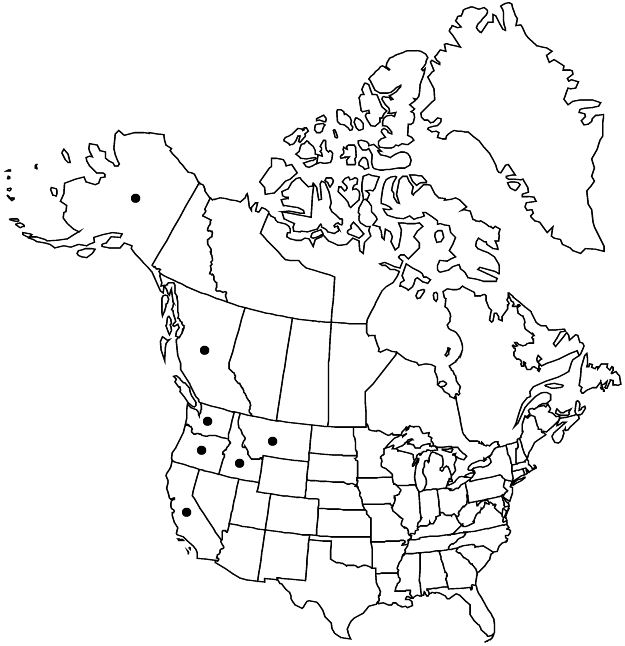Crataegus gaylussacia
Bull. S. Calif. Acad. Sci. 2: 69. 1903.
Shrubs, 30–100 dm. Stems: 1-year old twigs tan, older grayish; thorns on twigs recurved or straight, dark-brown young, 1–2 (–2.5) cm. Leaves: petiole 0.7–1.5 cm, glabrous, eglandular, sometimes glandular (Montana); blade ± rhombic-elliptic to elliptic-obovate or broadly ovate, 3–8 cm, lobes 0, or 2 or 3 per side, lobe apex acute to obtuse, margins serrate, teeth glandular in Montana, venation ± semicamptodromous, veins 3 or 4 per side, apex obtuse, abaxial surface ± glabrate, adaxial appressed-pubescent, hairy near veins in Oregon. Inflorescences 7–15-flowered; branches punctate, glabrous, sometimes densely pubescent (coastal Washington); bracteole margins stipitate or sessile-glandular. Flowers 15–17 mm diam.; hypanthium glabrous; sepals triangular, 4 mm, margins minutely and sparsely glandular-serrate, glabrous; stamens 20, anthers pink; styles 4 or 5. Pomes dull vinous purple becoming black mature, suborbicular to broadly ovoid, 8–10 mm diam., glabrous; sepals reflexed, apex obtuse; pyrenes 4 or 5, sides eroded. 2n = 34, 51, 68.
Phenology: Flowering Apr–May; fruiting Sep–Oct.
Habitat: Brush, especially near groundwater
Elevation: 10–400 m
Distribution

B.C., Alaska, Calif., Idaho, Mont., Oreg., Wash.
Discussion
Crataegus gaylussacia occurs from north of San Francisco to coastal mainland British Columbia, Vancouver Island, the Queen Charlotte Islands, and coastal Alaska around Anchorage. The species ranges somewhat sporadically to Montana; it is the most northerly occurring Crataegus in North America, reaching 61 N.
Crataegus gaylussacia is an ignored name that has priority over C. suksdorfii. The plants have considerable variation in leaf shape, extremes of which are the type of C. gaylussacia from the southern edge of the species range, with 3–4 cm, more or less unlobed, elliptic to ovate leaf blades, and more or less acute teeth (not unlike syntype material of C. suksdorfii), and a contrasted northern Californian type with huge (8 cm), deeply incised leaves. T. A. Dickinson and coworkers (pers. comm.) restrict C. gaylussacia to the autotriplod from California and Oregon, calling the remainder C. suksdorfii.
Crataegus gaylussacia differs from C. douglasii by stamen number. Also, the thorns are usually shorter and the fruit is usually smaller and more orbicular than in C. douglasii, as well as being of a different early color. In addition, C. gaylussacia usually has more or less camptodromous venation, unlike C. douglasii. Hybrids with the introduced European C. monogyna were first noticed by R. Love and M. Feigen (1979) in the Willamette Valley, Oregon, and are now locally common.
Selected References
None.
Lower Taxa
"thin" is not a number."thick" is not a number."adnate" is not a number."dm" is not declared as a valid unit of measurement for this property.